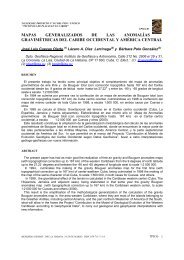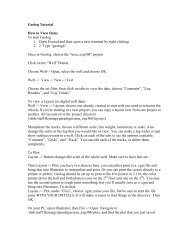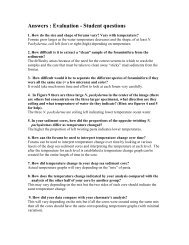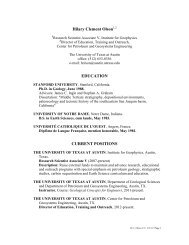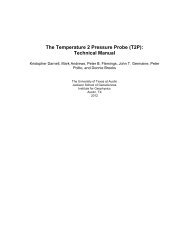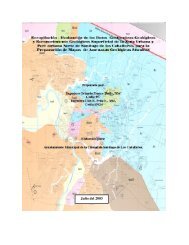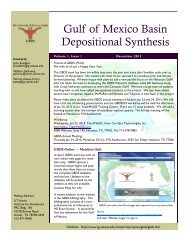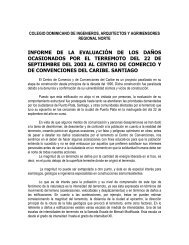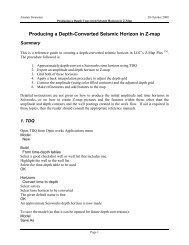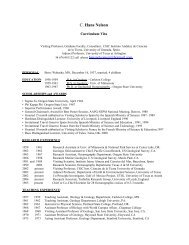You also want an ePaper? Increase the reach of your titles
YUMPU automatically turns print PDFs into web optimized ePapers that Google loves.
Interface Specification Document6.3.9 Sidescan Imagery PacketsWhen the sidescan option is present in the sonar and enabled, the sonar will output a left andright sidescan packet for each sonar ping. The sidescan data will be generated using the sameping as the bathymetry so it will be possible for the data collection system or subsequent processingto use the bathymetry data to geographically register the imagery. Since the sidescan datawill be output by the sonar on ethernet and this type of output has a limitation of 1500 bytes orless, the ping data from each beam may be broken up into multiple packets. The information forthe two beams will be output as a series of amplitude values, starting from the outermost samplecell on the port side, through the center to the outermost sample cell on the starboard side. Thenetwork transport protocol used is UDP/IP.The number of amplitude values output for each packet will vary with range. If RMS or averagemodes are used the data will be compressed to a maximum of 1024 samples per channel.The data from the sonar will not be slant range corrected. Determining the altitude of the sonarhead and performing slant range correction will be the responsibility of the data acquisition system.The sonar imagery data will not be compensated for changes in sonar power and gain.6.3.9.1 Sidescan Packetstruct{};SIDESCAN_IMAGEchar STX; // start character (0x02)char id; // packet id (0x48)unsigned short packet_size; // size of packet - next field through last Amplitude valueunsigned long ping_no; // sequential ping number since sonar power-up / resetDATA_TIME data_time; // time of ping for data packetunsigned short total_samples; // total number of amplitude samples for pingunsigned short ping_packet; // sequence number - (0 to n )unsigned short velocity; // programmed sound velocity (LSB = 1 m/sec)unsigned short sample_rate; // A/D sample rate (samples per second)unsigned short ping_rate; // Ping rate (pings per second * 1000)unsigned short range_set; // range setting for SeaBat (meters)unsigned short power; // power setting for SeaBatunsigned short gain; // gain setting for SeaBat// bits 0-6 - gain (1 - 45)// bit 14 (0 = fixed, 1 = tvg)// bit 15 (0 = manual, 1 = auto)unsigned char pulse_width; // transmit pulse width (microseconds)unsigned char tvg_spread; // spreading coefficient for tvg * 4// valid values = 0 to 240 (0.0 to 60.0 in 0.25 steps)unsigned char tvg_absorp; // absorption coefficient for tvgunsigned char flags; // bit 0 - Roll stabilization flag. 0 = off, 1 = on.unsigned short spare1[2]; // more sparesshort projector; // projector settingunsigned short sample_count; // number of amplitude samples in packetunsigned short amplitude[n]; // amplitude data where n = sample_count// 12 bit amplitude stored in 12 most significant bitsunsigned char spare2; // spare to align ETX & checksumchar ETX; // packet end character (0x03)unsigned short checksum; // checksum for data packet______________________________________________________________________SeaBat <strong>8101</strong> Operator's Manual 6-32 (ISD Rev 1.23) Version 3.02





